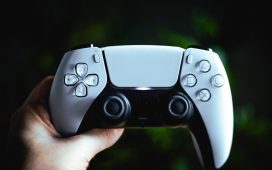Ahead of Samsung Unpacked, the company’s summer hardware event scheduled for July 10, Samsung has given us an early look at what we can expect from the BioActive health sensor on the next generation of Galaxy smartwatches, including the upcoming Galaxy Watch 7.
The BioActive sensor comes embedded in the best Samsung watches. It is a single chip that combines several fitness and health-monitoring sensors, including the optical heart rate monitor, electrical heart signal tracking, and bioelectric impedance analysis.
According to a recent Samsung press release, the upgraded BioActive sensor has an improved design to allow more space on the chip, optimized sensor placements to get more accurate readings, and several colored LEDs alongside the standard red and green LEDs.
Samsung squeezed more sensors onto the chip after it gave each light-receiving photodiode a performance boost and halved the number of photodiodes needed to track the light accurately reflected to the watch’s underside.
Most fitness trackers and smartwatches use optical heart rate sensors to measure your heart rate. These shine light (often green) onto your skin with light-receiving photodiodes measure how much of that light is reflected back, and that recording is turned into a heart rate estimate.

The improved LED array could help make heart rate measurements more accurate. The green LEDs found on most optical heart rate monitors offer the best balance of performance vs accuracy, but this varies depending on the environment.
According to The Conversation, red light travels through the skin the best, but other light sources can interfere with the signal, making it hard to isolate heart rate measurements. Adding several LED colors, including red, may allow Samsung to consolidate readings to boost the watch’s accuracy.
Samsung also noted that one of the first new features enabled by the improved BioActive sensor will be the “Advanced Glycation End Products (AGEs) Index — an indicator of metabolic health and biological aging strongly influenced by overall lifestyle and dietary habits.”
However, the release noted that “the addition of an AGEs Index is just one of the many new advanced features planned for the next Galaxy Watch,” suggesting that it might not be available at launch and could be rolled out later, especially if it needs regulatory approval.
Samsung notes that the main aim of this redesign was to “enable even more precise health insights.” However, it doesn’t detail what we can expect from the newly upgraded BioActive sensor in the Galaxy watches unveiled at Unpacked later in the week.
Throughout the release, Samsung repeatedly mentions that the sensor will be in “the next Galaxy Watch,” presumably referring to the Galaxy Watch 7. Still, the upgraded BioActive hardware will likely also come baked into the Galaxy Watch Ultra, the premium watch we expect to see at Unpacked.









